The Reffell family in the UK has always been quite small in numbers. The graphs below have been derived from the UK birth, marriage and death registers of 1837 to 2020, although some data is missing for the first and last few years. Surprisingly they do not show any great increase in the family over the period covered, as can be seen from the blue trend lines. If allowance is made for the known lack of birth entries before 1874 (estimated to be possibly up to 60%), the graphs show little growth during a time when the world population went from around 1 billion to nearly 7 billion.
Births, Marriages & Deaths
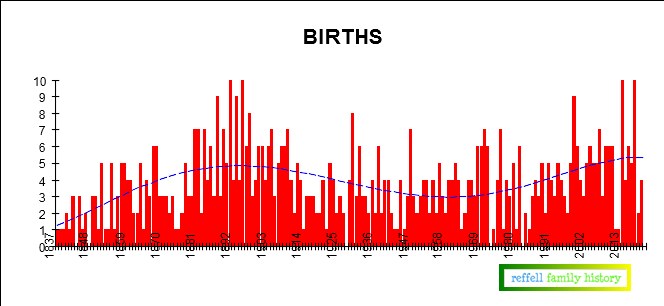
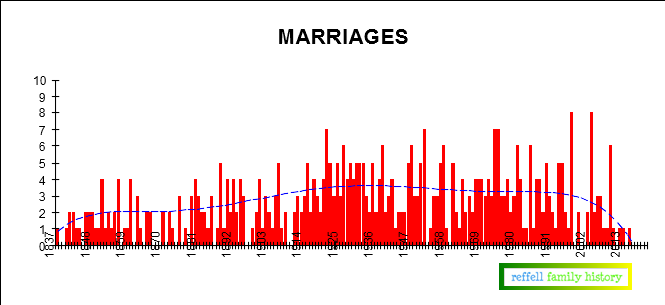
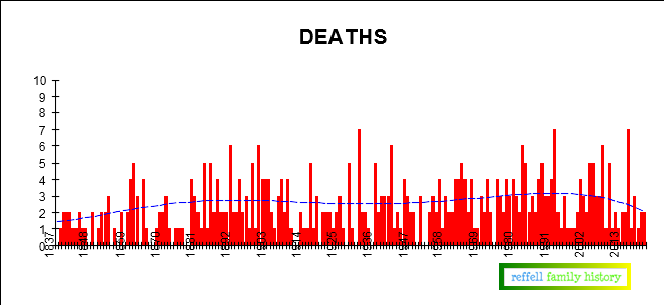
In the first twenty years of the 21st century there were 98 births, 30 marriages and 57 deaths registered in England, Scotland and Wales. Very notable is the number of children now being born whose parents are not married, with a sizable number coming from the overseas branches of the family.
Births
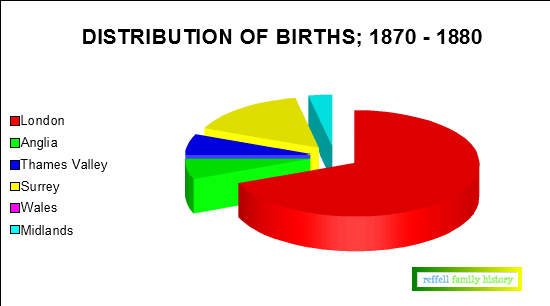
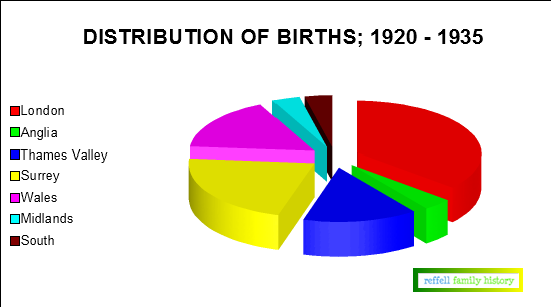
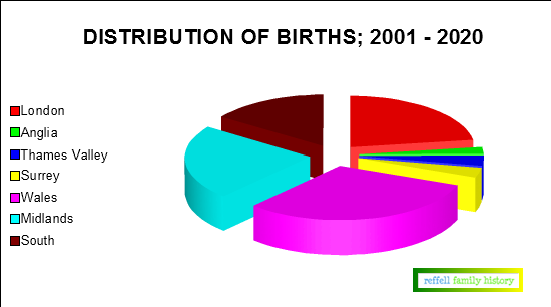
From the above graphs it can be seen that from origins in London and the south east, the family has spread out and the most number of births seen nowadays is in Wales.
Marriages
Between 1840 and 1880, approximately 15% of all marriages were made for the second time, often due to one partner dying, leaving young children. There are a number of instances where a brother or sister of the deceased married the surviving partner. By the 1980s onwards second marriages were surprisingly fewer as a percentage at around 6%, and now were usually due to a divorce rather than a death. There are two instances of a third marriage. Notably, there was one marriage in 1880 between two people who both had the surname of Reffell, who were only distantly related.
Deaths
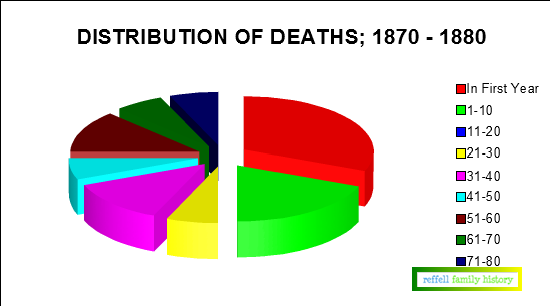
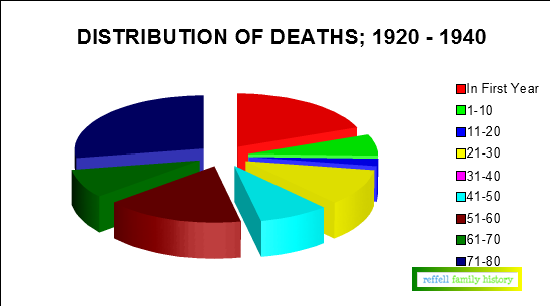
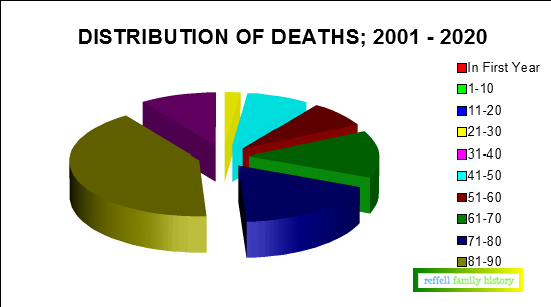
Analysis of the death registers show how modern medical science has extended the average life expectancy. Since 1999 we have had four deaths of a centenarian, all female. The graphs of Reffell deaths above show that even as late as the third quarter of the 19th century, about a half of all children who were born did not reach their 10th birthday. In the first twenty years of the 21st century the youngest death was 29 and over a half of those dying were aged over 80.
The Office for National Statistics 2018 to 2020 tables in the UK show that the average age at death currently stands at 86.7 years for males and 89.3 years for females. There has been a slight drop in these ages from before the Coronavirus pandemic, but it is expected that life expectancy will return to an improving trend in the future. Currently for a female child born today, statistically there is a 20% chance of living to 100, for a male child it is 14%.
Names
There has been an interesting change in first names over the years. In the first half of the 19th century the most common male names were in order William, Henry, John and James. The most popular female names were Ann, Sarah, Elizabeth and Mary or Mary Ann. From the turn of the 21st century not one of these names appears, with none of the modern names repeated.